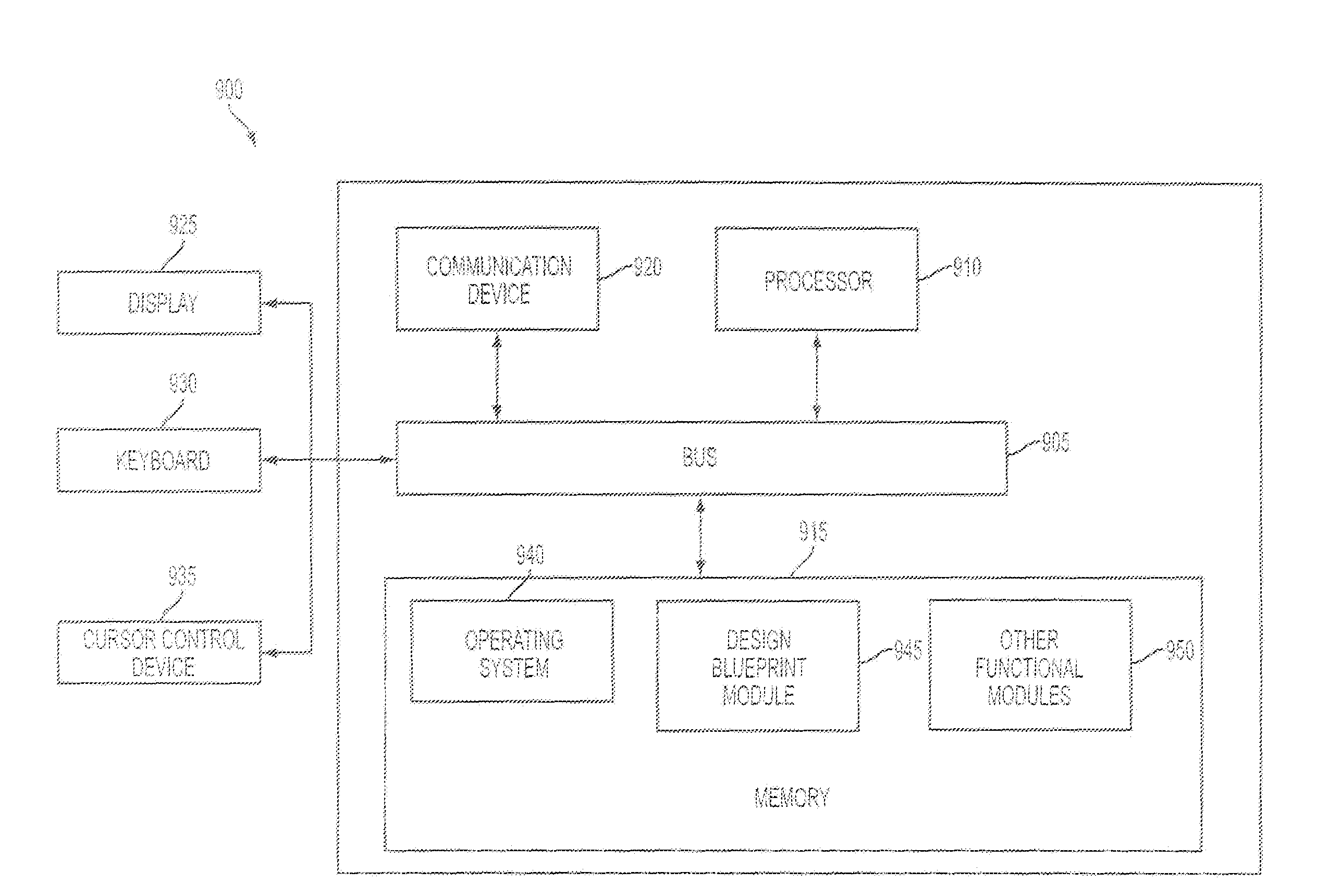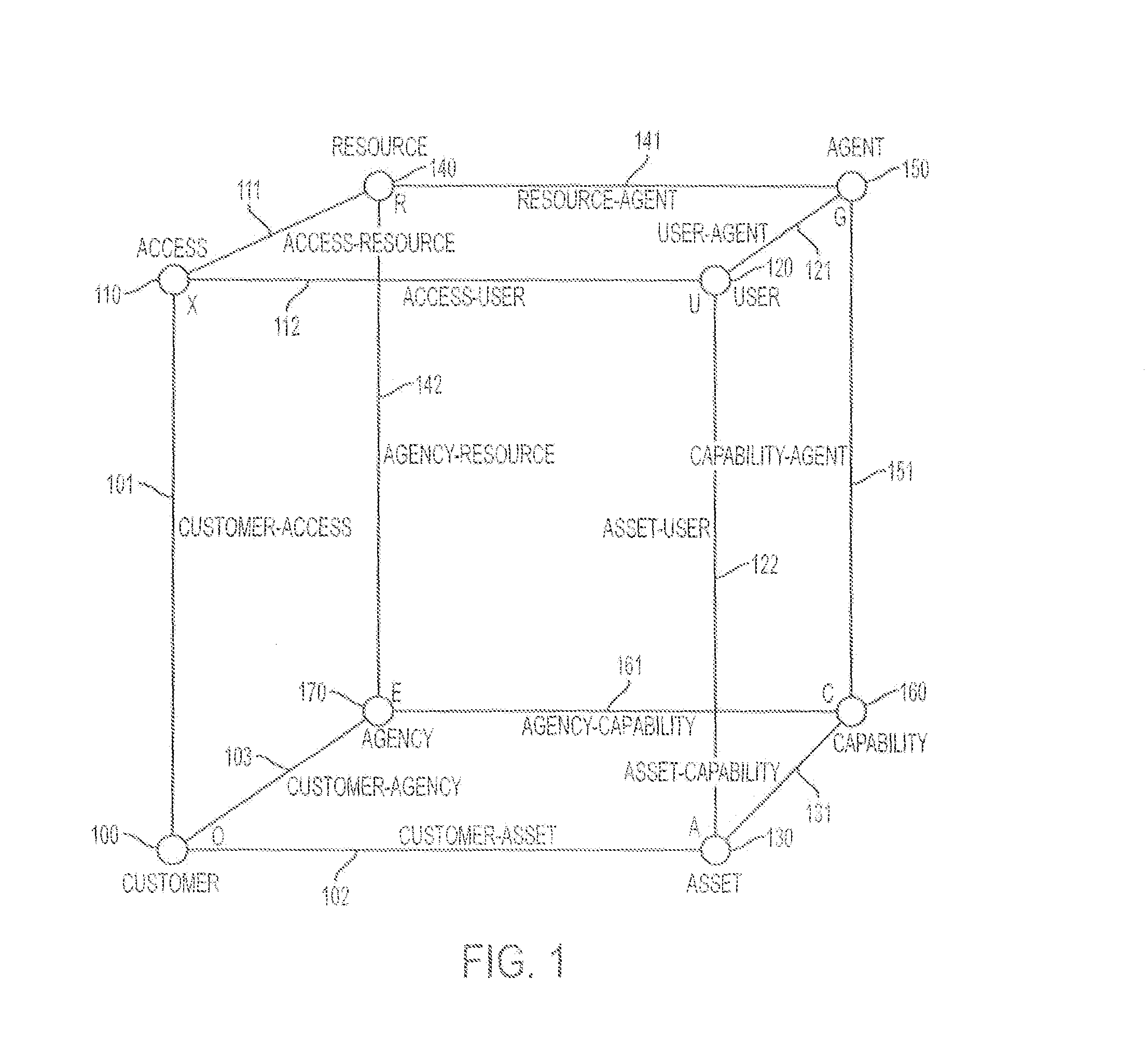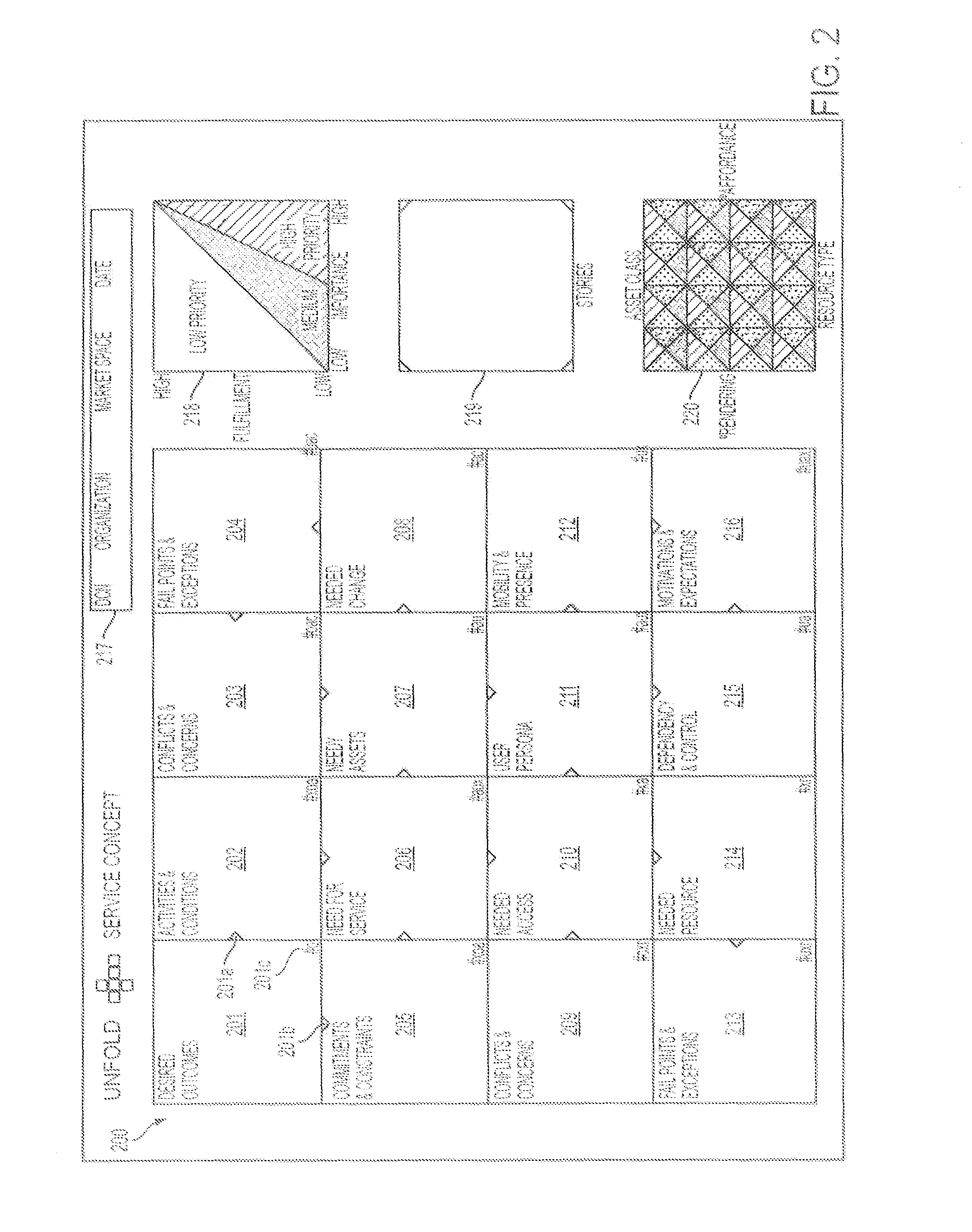Service design system and method of using same
a service design and design system technology, applied in the field of service design system and method of using same, can solve the problems of system user confusion, lack of system user guidance, and lack of systematic approach to translating and expressing business models into actual designs
- Summary
- Abstract
- Description
- Claims
- Application Information
AI Technical Summary
Benefits of technology
Problems solved by technology
Method used
Image
Examples
Embodiment Construction
[0025]Reference will now be made in detail to the following exemplary embodiments, which are illustrated in the accompanying drawings, wherein like reference numerals refer to like elements throughout.
[0026]The exemplary embodiments may be embodied in various forms without being limited to the exemplary embodiments set forth herein. Descriptions of well-known parts are omitted for clarity.
[0027]FIG. 1 is a diagram of a cube that illustrates the relationships between various universal elements that define a service that is provided to a customer according to an exemplary embodiment. These universal elements may include eight design perspectives, which are represented as the corners of the cube in FIG. 1. The universal elements may also include twelve design arguments, which are represented as the edges of the cube in FIG. 1. There are two perspectives to each argument, i.e., the two end points of the edge. The design perspectives and design arguments define a service by describing, w...
PUM
 Login to View More
Login to View More Abstract
Description
Claims
Application Information
 Login to View More
Login to View More - R&D
- Intellectual Property
- Life Sciences
- Materials
- Tech Scout
- Unparalleled Data Quality
- Higher Quality Content
- 60% Fewer Hallucinations
Browse by: Latest US Patents, China's latest patents, Technical Efficacy Thesaurus, Application Domain, Technology Topic, Popular Technical Reports.
© 2025 PatSnap. All rights reserved.Legal|Privacy policy|Modern Slavery Act Transparency Statement|Sitemap|About US| Contact US: help@patsnap.com



